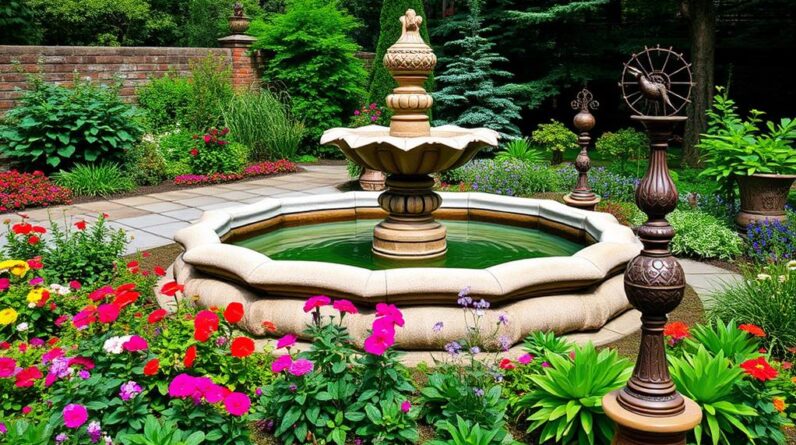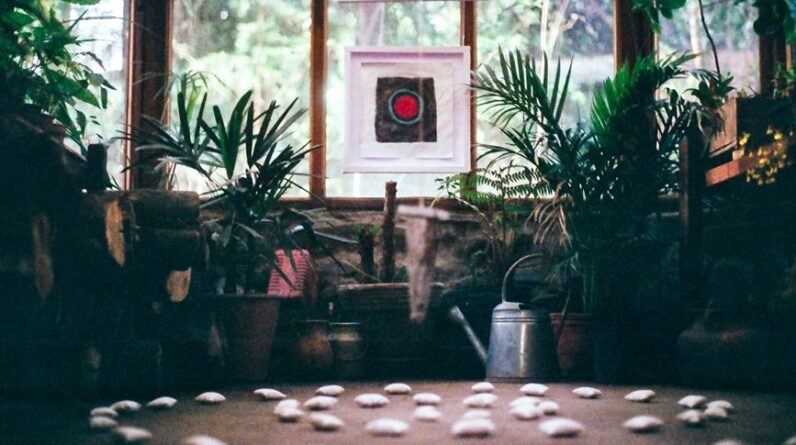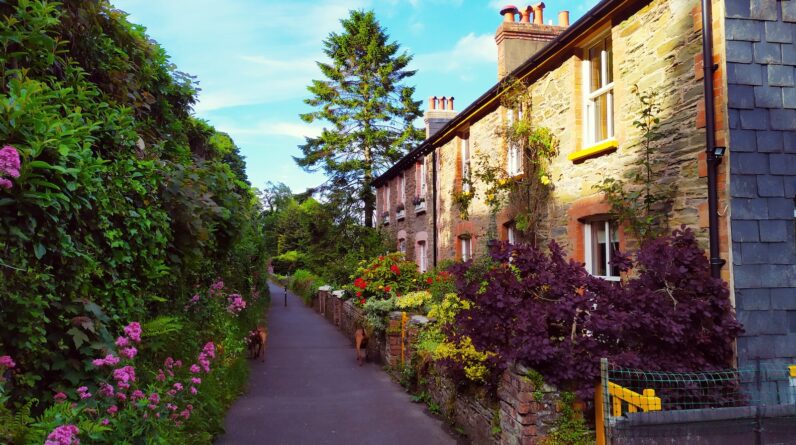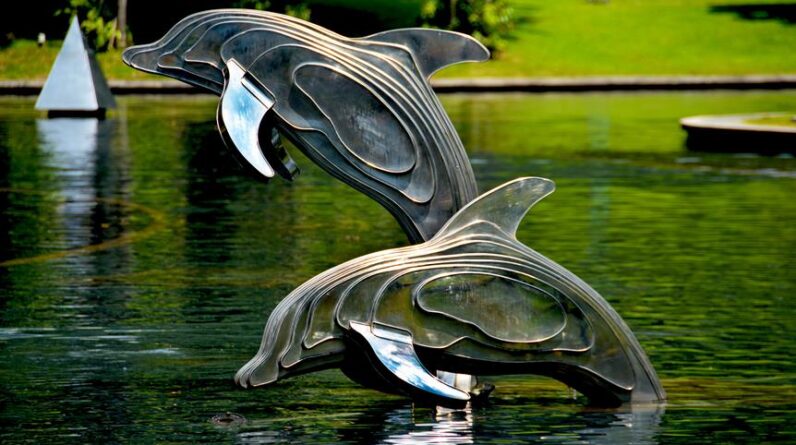
Are you ready to take your landscape design to the next level? Step into a world where straight lines are a thing of the past. Imagine a landscape that flows and curves, like a graceful dance.
In this article, we will explore the art of creating curves in your landscape design, specifically focusing on curved pathways and borders. Get ready to unleash your creativity and discover the endless possibilities that curved landscapes have to offer.
Let's dive in and get inspired!
Key Takeaways
- Curved pathways and borders enhance the beauty and functionality of a landscape.
- Implementing organic shapes and curves creates harmony and flow in the design.
- Curved pathways and borders guide the viewer's eye, create anticipation, and add focal points to the garden.
- Incorporating curves in pathway design and borders creates a sense of fluidity, elegance, and movement in the landscape.
The Benefits of Curved Pathways and Borders
You'll love the way curved pathways and borders can enhance the beauty and functionality of your landscape. By incorporating curves into your design, you not only create visual interest but also improve accessibility throughout your outdoor space.
Curved pathways gently guide you through your garden, inviting you to explore and discover hidden treasures along the way. They create a sense of flow and movement, adding a dynamic element to your landscape.
Additionally, curved borders add depth and dimension to your flower beds and garden areas. They break up the monotony of straight lines, creating a more natural and organic feel. Curves can also help soften the harsh angles of your home or other structures, blending them seamlessly into the surrounding environment.
Design Principles for Curved Landscapes
Sometimes, but, it's important to consider design principles when creating curved landscapes. Implementing organic shapes in landscape design can add a sense of harmony and flow to your outdoor space. By incorporating curves in pathways and borders, you can create a more natural and inviting environment.
Curved elements also have the potential to maximize visual interest, making your landscape more dynamic and engaging. They can draw the eye along a winding path or create a sense of movement in an otherwise static space.
Additionally, curved landscapes can provide a sense of discovery as you navigate through the various twists and turns. By following design principles and incorporating these organic shapes, you can create a landscape that isn't only visually appealing but also innovative and unique.
Incorporating Curves in Pathway Design
To create a sense of fluidity and elegance, incorporate graceful curves into your pathway design. Enhancing accessibility with curved pathways isn't only visually appealing but also functional.
Curved pathways can provide a smoother and more comfortable walking experience, especially for individuals with mobility challenges. By eliminating sharp angles and straight lines, you create a pathway that flows effortlessly through the landscape, inviting exploration and discovery.
Furthermore, using curves can create focal points in landscape design. By strategically placing curves in your pathways, you can draw attention to specific areas or features in your garden. Whether it's a beautiful flower bed, a stunning sculpture, or a tranquil sitting area, the curves in your pathways can guide the viewer's eye and create a sense of anticipation and intrigue.
Creating Flow With Curved Borders
Enhance the overall flow and movement in your landscape design by incorporating curved borders throughout your garden. Curved borders not only add visual interest but also create a sense of movement that can transform your outdoor space into a dynamic and engaging environment.
Here are some ways curved borders can enhance your landscape design:
- Enhancing visual interest with curved borders: By breaking away from straight lines and sharp angles, curved borders add a touch of elegance and fluidity to your garden. They create soft, organic shapes that can complement the natural contours of your landscape.
- Creating a sense of movement with curved pathways: Curved borders can guide the eye and create a flow that leads visitors through your garden. By curving the borders along pathways, you can create a sense of anticipation and discovery as people explore your outdoor space.
- Adding depth and dimension: Curved borders can create depth in your garden by creating layers and varying heights. By incorporating different types of plants and textures along the borders, you can create a visually captivating landscape that's full of depth and dimension.
By incorporating curved borders into your landscape design, you can enhance the overall flow and movement of your garden while adding visual interest and depth.
Now, let's explore some creative ideas for curved landscape design.
Creative Ideas for Curved Landscape Design
Get inspired by these unique ideas for designing curved pathways and borders in your landscape.
One creative idea is to use unique plant arrangements to add visual interest and texture to your curved design. Consider using a mix of different types of plants, such as tall grasses, flowering shrubs, and trailing vines, to create a dynamic and eye-catching display.
Another innovative approach is integrating water features into your curved landscape design. Imagine a meandering pathway that leads to a small pond or a flowing stream. The sound of trickling water and the reflection of sunlight on the surface will create a tranquil and inviting atmosphere.
Frequently Asked Questions
What Are Some Common Mistakes to Avoid When Incorporating Curved Pathways and Borders in Landscape Design?
When incorporating curved pathways and borders in landscape design, you should avoid common mistakes like using excessive curves that disrupt the flow and not considering maintenance. Follow these tips for maintenance and create stunning, innovative landscapes.
How Can I Maintain the Curves of My Pathways and Borders Over Time?
To maintain the curves of your pathways and borders over time, follow these tips for preserving the curves in landscape design. By regularly inspecting, repairing, and adjusting, you can keep your curves looking pristine and enhance the overall beauty of your landscape.
Are There Any Specific Plants or Materials That Work Best With Curved Landscape Design?
When it comes to designing your landscape with curved pathways and borders, you'll want to choose plants and materials that complement the fluidity of your design. Consider plant selection and material options that enhance the natural flow and beauty of your curved landscape.
Should I Hire a Professional Landscaper for Creating Curved Pathways and Borders, or Is It Something I Can Do Myself?
You can definitely create curved pathways and borders yourself, but hiring a professional landscaper can offer expertise and save you time. Consider your budget and the level of detail you desire for the best choice.
Can Curved Pathways and Borders Be Used in Small Spaces, or Are They Better Suited for Larger Landscapes?
Curved pathways in small gardens bring a touch of elegance and creativity. While they may take up some space, the pros of curved borders in small landscapes outweigh the cons. Get innovative!
Conclusion
In conclusion, incorporating curved pathways and borders in landscape design can greatly enhance the overall aesthetic and functionality of outdoor spaces.
By using flowing lines and organic shapes, you can create a sense of movement and harmony that captivates the eye and engages the senses.
For example, imagine strolling along a winding pathway surrounded by lush greenery, with each turn revealing a new and enchanting vista.
The possibilities are endless when it comes to creating a captivating landscape with curves.












